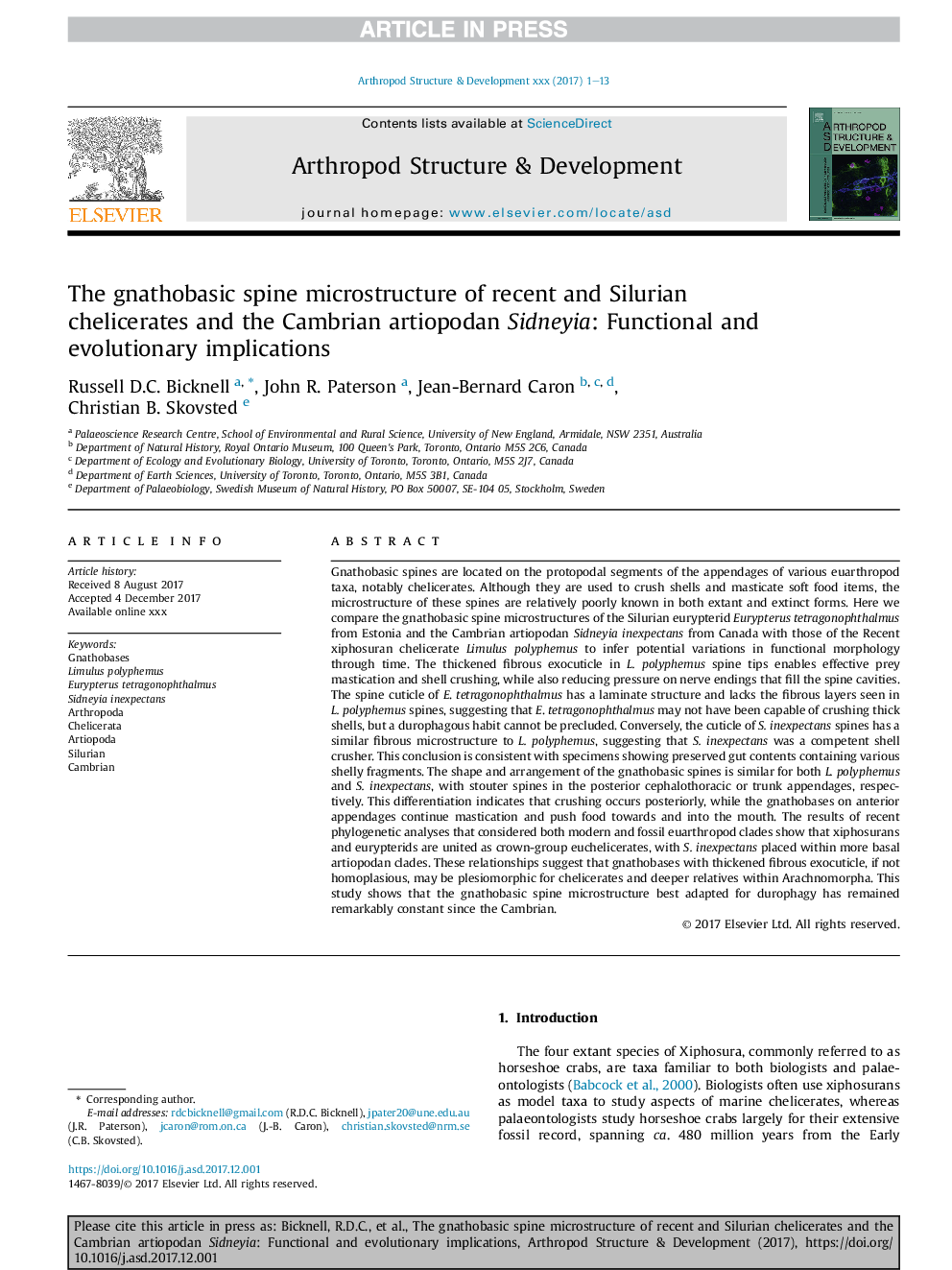| Article ID | Journal | Published Year | Pages | File Type |
|---|---|---|---|---|
| 8624700 | Arthropod Structure & Development | 2018 | 13 Pages |
Abstract
Gnathobasic spines are located on the protopodal segments of the appendages of various euarthropod taxa, notably chelicerates. Although they are used to crush shells and masticate soft food items, the microstructure of these spines are relatively poorly known in both extant and extinct forms. Here we compare the gnathobasic spine microstructures of the Silurian eurypterid Eurypterus tetragonophthalmus from Estonia and the Cambrian artiopodan Sidneyiainexpectans from Canada with those of the Recent xiphosuran chelicerate Limulus polyphemus to infer potential variations in functional morphology through time. The thickened fibrous exocuticle in L. polyphemus spine tips enables effective prey mastication and shell crushing, while also reducing pressure on nerve endings that fill the spine cavities. The spine cuticle of E. tetragonophthalmus has a laminate structure and lacks the fibrous layers seen in L. polyphemus spines, suggesting that E. tetragonophthalmus may not have been capable of crushing thick shells, but a durophagous habit cannot be precluded. Conversely, the cuticle of S. inexpectans spines has a similar fibrous microstructure to L. polyphemus, suggesting that S. inexpectans was a competent shell crusher. This conclusion is consistent with specimens showing preserved gut contents containing various shelly fragments. The shape and arrangement of the gnathobasic spines is similar for both L. polyphemus and S. inexpectans, with stouter spines in the posterior cephalothoracic or trunk appendages, respectively. This differentiation indicates that crushing occurs posteriorly, while the gnathobases on anterior appendages continue mastication and push food towards and into the mouth. The results of recent phylogenetic analyses that considered both modern and fossil euarthropod clades show that xiphosurans and eurypterids are united as crown-group euchelicerates, with S. inexpectans placed within more basal artiopodan clades. These relationships suggest that gnathobases with thickened fibrous exocuticle, if not homoplasious, may be plesiomorphic for chelicerates and deeper relatives within Arachnomorpha. This study shows that the gnathobasic spine microstructure best adapted for durophagy has remained remarkably constant since the Cambrian.
Related Topics
Life Sciences
Agricultural and Biological Sciences
Insect Science
Authors
Russell D.C. Bicknell, John R. Paterson, Jean-Bernard Caron, Christian B. Skovsted,
